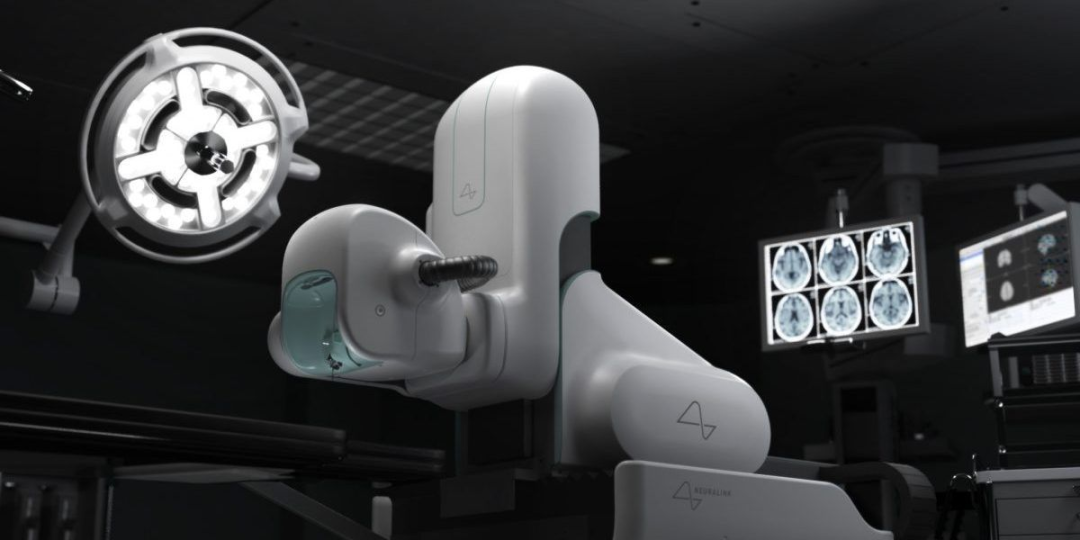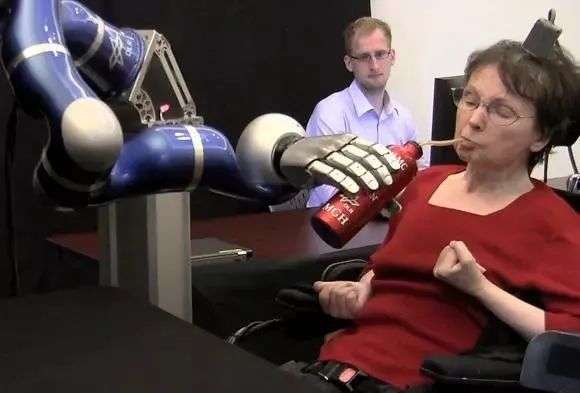Micron, which is a quarter of the diameter of a human hair, is less likely to cause damage to the brain, so it can be implanted in deeper brain regions. In addition, the 3072 electrodes distributed on 96 nerve laces also create the possibility for the transmission of a large amount of data, which also makes it more able to promote people’s understanding of the brain and the treatment of brain diseases. Neuralink has also developed a neurosurgery robot that automatically embeds 6 nerve laces every minute to achieve brain-computer interface connection.
Neuralink latest version of brain-computer interface surgical robot V2
But Neuralink also faces many challenges.
The primary problem is that since the invasive interface is adopted, it is necessary to solve the problem of how to minimize the damage to the brain during surgery. Second, as the implantation time is prolonged, the puncture electrode is wrapped by inflammatory cells, which theoretically leads to signal loss. In addition, the precise selection of electrode implantation sites and effective signal analysis require a deeper understanding of the brain’s functional structure and activity patterns.
At present, Neuralink company has started to test on mice and pigs, and cooperated with the University of California, Davis to use monkey tests. It is expected to test on humans in the future.
In addition to Neuralink, there are many academic research projects and entrepreneurial companies in the brain-computer interface.
BrainGate: Brain-Computer Interface
The BrainGate (“Brain Gate”) system was developed by Brown University in the United States. The system allows the human brain to remotely control other devices through wireless technology. BrainGate relies on implanting a hard needle that can hold up to 128 electrode channels into the human brain to achieve the desired function.

